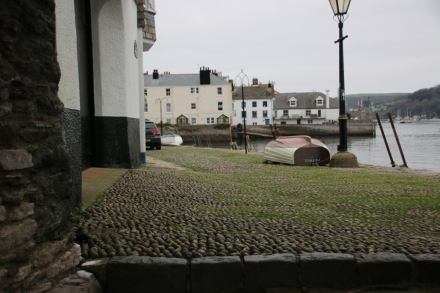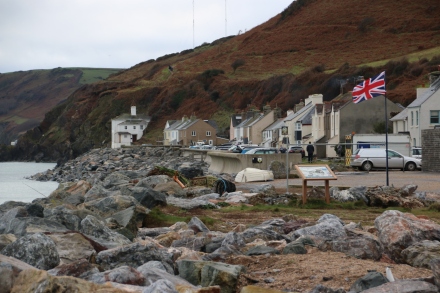Dartmouth is just that…a bustly town at the mouth of the River Dart where narrow streets abound with history and drivers find it impossible to park. Having driven around the town three times and the only car park a similar number, I decide to do the sensible thing and follow the signs out from the centre to the Park & Ride. Here a scruffy piece of A4 over the ticket machine announces that the P&R buses (the whole point of P&R) ceased to run on October 29th. I ask you…what is the point of having the signs from the middle of town. Two more circuits and a bit of hovering and I time it bang on as car leaves from the street and I carry out a pretty impressive piece of parallel parking.
So, in the words of the title of that well known song by Peter, Paul & Mary, I had first hand experience of the train element. From over the estuary the sound of a real steam train stirs boyhood memories with the sound of the whistle and the sight of the ribbon of steam billowing behind above the carriages.
Planes must have passed overhead during my visit. However it was boats that took the biscuit. I saw countless boats of every description. I also saw three ships, well ferries, two of which carried vehicles, pass me by, plying across the water at different locations, even though it was not Christmas Day, nor the morning, just as they have done since the 13th century.
Bayard’s Cove is the oldest part of the town. It is a quay whose cobbles ooze history. Read this bit about the coal gangs that operated from here.
I love the Tudor houses amid the narrow steep alleys and the small fort at the end.
Further along the estuary, where the river meets the sea, yes….the mouth of the Dart (!), is a church, it’s graveyard and, on each bank, two parts of a larger fort. Both would have had cannon and a huge chain would have been stretched across between them to prevent pirates and enemy forces entering the river and threatening the town.






















You must be logged in to post a comment.